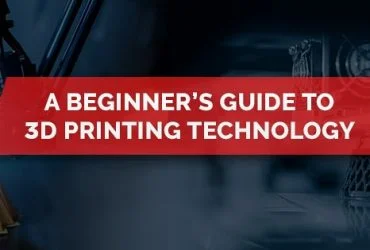Advances in Real-time Rendering for Architectural Visualization
Until recently, architectural 3D visualization has undergone significant transformation. This transformation, or technological evolution, is primarily driven by the latest advances in real-time rendering technology. Civil engineers, planners, and architects are all heavily benefited by these advances. Now, they have unlimited access to several tools and techniques to create stunning visualizations with unprecedented realism.

Well, it is time we explore the latest developments in real-time rendering for architectural visualization, shaping the future of architectural designs. This highly informative article will break down every aspect of it, along with future trends and challenges in technology.
So, if you are an aspiring architect or an architectural renderer, bookmark this article for future reference.
Let’s start!
Key differences between traditional rendering and real-time rendering
In the context of CG graphics, rendering is the process of generating 2D images or animations from digital models. In terms of concept, workflow, and application, traditional rendering and real-time rendering stand as two distinct approaches. Both have significant differences in their techniques and performances, which renderers must have thorough knowledge about.
Below are some of the fundamental differences between the two rendering approaches.
-
Techniques used
-
Traditional rendering:
- Involves a ray-tracing method to generate hyper-realistic images.
- The method is time-consuming, given the photorealistic detailing generated.
-
Real-time rendering:
- Involves rasterization process to create 3D-rendered visuals.
- The process is speedy, but the realism is somewhat lacking in the generated images.
-
-
Ease of workflow
Traditional rendering:
- Rendering process is usually lengthy due to highly realistic render creation.
- Complex and time-consuming workflows make the iteration process slow.
Real-time rendering:
- Rendering process is much faster than the traditional method and yields instant feedback.
- Iteration and design adjustments are rapid, given the uncomplicated workflow.
-
Hardware requirements
Traditional rendering:
- Involves complex computations and application of high-resolution textures, intricate simulations, etc.
- Requires high-end hardware setup with adequate memory, graphics power, and processor.
Real-time rendering:
- 3D images are generated in real-time in less than a second, giving users interactive experiences.
- Performance is optimized for even basic hardware setup, ensuring smooth visuals.
-
Applications
Traditional rendering:
- Yields detailed, ultra-realistic rendered visualizations.
- Ideal for movies, architectural visualization, product lifestyle renders, simulations, etc.
Real-time rendering:
- Creates dynamic visuals with less realism but optimum user experience.
- Ideal for computer video games and AR/VR experiences.
In short, both approaches are rapidly advancing and beneficial in their own merit. Often, professional renderers offering high-end 3D design services use a hybrid approach, combining both conventional and real-time rendering methods. The idea is to generate realistic 3D visualizations with optimum rendering time, costs, and effort. It is up to the rendering specialist to select the best approach.
Let’s move on to the latest technological advances in real-time rendering for architects and designers.
Recent advances in real-time rendering for architectural visualization
The latest modern technological advances have truly brought a significant paradigm shift in 3D architectural visualization. They have practically transformed how designers, architects, planners, and stakeholders engage with and experience the proposed designs.
So, let’s explore these transformative 3D real-time rendering developments that have elevated design innovation in the architectural sector.
-
Real-time ray-tracing
One of the major advancements is the integration of real-time ray-tracing technology into rendering engines. This technology creates unbelievably life-like 3D renders, mostly because it replicates real-world light behavior. This includes accurate depictions of reflections, refractions, and shadows. Thanks to this advancement, 3D exterior and interior renderings and 3D environments appear more realistic with natural-looking lighting.
-
Dynamic lighting
As we discuss how accurate light simulation increases the visual fidelity of the renders, one more significant development must be mentioned. Real-time rendering software programs can now simulate different lighting conditions seen throughout the day. Such is the accuracy and life-like precision offered by dynamic lighting capabilities. Architects can now replicate the lighting as per the sun’s positioning, create a realistic sky backdrop, and apply dynamic shadows. This highly realistic atmospheric rendering enhances the visual storytelling of architectural designs, creating more impactful rendered images.
-
Global illumination
In real-time rendering, global illumination techniques simulate indirect lighting effects realistically. The entire process is algorithm-oriented, where the algorithms solve the indirect lighting of a scene, generating high-fidelity results. This includes color bleeding, bounced light, ambient occlusion, etc. Together, these create natural-looking and immersive 3D architectural scenes.
-
Real-time AR/VR
Real-time rendering engines have evolved exponentially to provide AR/VR support, facilitating faster design reviews and presentations. This seamless integration with augmented reality and virtual reality generates immersive and interactive environments for architects and clients. Features such as spatial audio, motion tracking, and interactive elements are integrated into the special rendering engines.
-
Physically accurate materials
There have been steady advancements in material rendering algorithms that create physically accurate materials. These highly detailed materials contain complex properties like anisotropic reflections, micro-surface details, subsurface scattering, etc. These properties generate incredibly realistic architectural models with depth and precision.
-
Performance optimization
The latest real-time rendering engines are designed for maximum performance optimization and are ideal for various devices and platforms. These engines continue to offer specialized techniques that are prone to optimizing rendering performance. These advanced techniques include occlusion culling, LOD (level-of-detail) rendering, GPU instancing, and the like. All these not just enhance rendering efficiency, but also allow complex 3D scenes to run smoothly, even on lower-end hardware setups.
-
AI-driven rendering
AI has become one of the most prominent forces in real-time rendering. AI-powered denoising techniques reduce rendering noise and artifacts, which eventually enhance render quality. This also reduces rendering times, making the process faster than traditional rendering. ML (machine learning) algorithms also play a significant role in real-time architectural visualization. They facilitate accurate texture synthesis, automatic asset generation, and scene optimization, as well as streamline the rendering workflow.
-
Real-time simulated visualization
Architects can now simulate dynamic environmental elements apart from static visualizations with real-time rendering methods. Such as rain, thunderstorms, wind, fog, flora, and fauna, which were previously unattainable to generate. These dynamic simulations help designers and decision-makers make data-driven design explorations, expediting the design validation process.
-
More collaborative workflows
The latest real-time rendering software programs offer better collaborative workflows, allowing multiple users to co-work on the same project. These software come with features like cloud rendering, version control, live linking, and more. These features together foster efficient communication and instantaneous feedback integration.
-
Cross-platform accessibility
Thanks to recent technological advances, real-time rendering tools have become all the more compatible across multiple platforms. This cross-platform accessibility expands audience reach regardless of the device and platform the users are in. Thus, with this advancement, architectural designs can now be seamlessly experienced on desktop computers, web browsers, laptops, smartphones, and the like.
This was the ultimate checklist of most of the technological advances that happened recently in the real-time rendering domain. Especially for the architectural visualization sector. The gradual rise of real-time rendering speaks a lot about its functionalities and applications, often making it the preferred choice for “arch-viz”.
Well, at this point, this article is going to get all the more interesting. Because until now, we have covered what is real-time rendering and why is it important. Now, we are going to delve deep into the exciting future trends and challenges in the said field. Knowing them beforehand will not help architects and renderers stay prepared for the future. It will also give them a competitive edge over their peers. So, let’s move on to this exciting last segment on trends and innovations in real-time 3D rendering.
Future trends and challenges in architectural real-time 3D visualization
Trends:
- More interactive simulations for data-driven visuals and better spatial understanding.
- AR/VR/MR will become the standard for interactive and immersive renders.
- Real-time simulations for life-like and interactive cityscapes and sustainable designs.
- Usage of high-resolution textures for better urban planning projects, infrastructural developments, and environmental surveys.
- More cloud-based sharing, design iteration, and reviewing among all stakeholders with gamified visual experience.
- Generative AI models will create 3D renders based on performance criteria.
- Automated creation of design variations.
- Interactive simulations to show the environmental impacts of specific architectural choices.
- Advanced visualization tools to visualize energy-efficient solutions like solar panels, solar panels, etc.
- Integration of real-time data streams to visualize occupancy data, BIM data, building performance metrics, IoT sensor feedback, etc.
- Narrative-driven visualizations to enhance storytelling and establish emotional connection.
All these predicted trends will gradually blur the line between reality and virtuality with compelling and hyper-realistic 3D architectural renders in real-time.
Challenges:
- Integrating new technologies and workflows into existing design processes is cumbersome and inconvenient.
- Investment in high-end hardware, GPUs, and computational resources is required, given the advanced rendering process.
- Concerns regarding data privacy, security, and intellectual property protection are likely to increase.
- Content optimization is difficult; balancing between high-fidelity rendered visuals and performance across multiple platforms is demanding.
Although the challenges are fewer compared to all the amazing benefits the technology offers. Still, addressing these shortcomings is essential to unleashing the full potential of architectural real-time 3D visualization technology.
Conclusion
That’s it. It’s an official wrap of our extensive article on the advances in real-time rendering for architectural visualization. Hope it has been an enjoyable and informative read. We also believe the readers have got a fair understanding of the concept of real-time rendering and its benefits in the architectural field.
To conclude, these rapid advancements have brought endless new opportunities and realism to architectural 3D designs. Architects, building planners, interior designers, etc., can now not just present their ideas, but also provide an immersive experience to the stakeholders. They now have extensive access to powerful rendering tools and engines that help them bring complex architectural concepts to life.
Hence, leveraging these advancements in real-time rendering with techniques like global illumination, ray-tracing, AI-driven rendering, etc., must be within the workflow of all architectural renderers. Realtors must partner with experienced companies offering professional 3D rendering services. These external agencies are backed by experienced rendering artists with years of hands-on experience and unlimited access to cutting-edge technologies.



